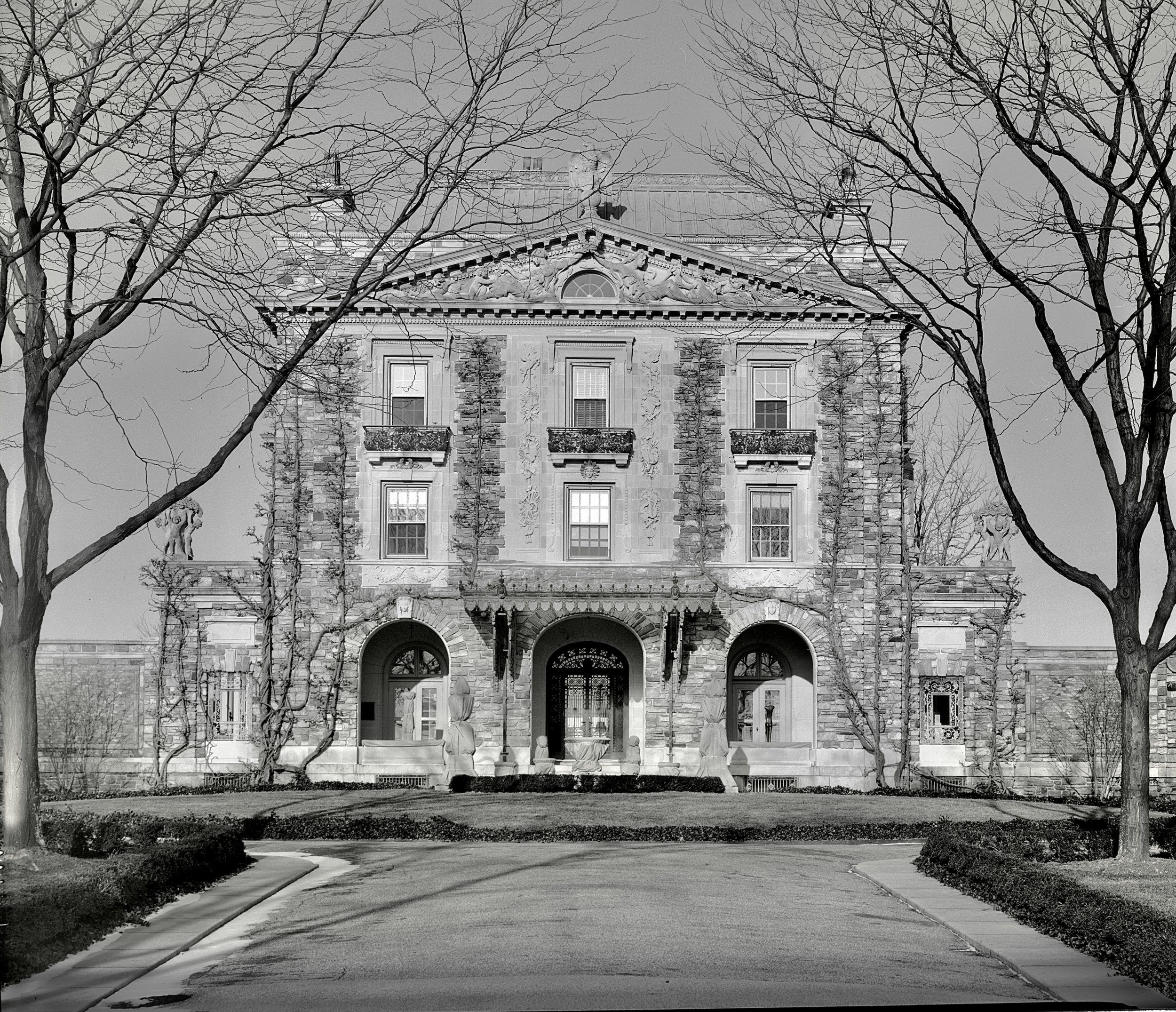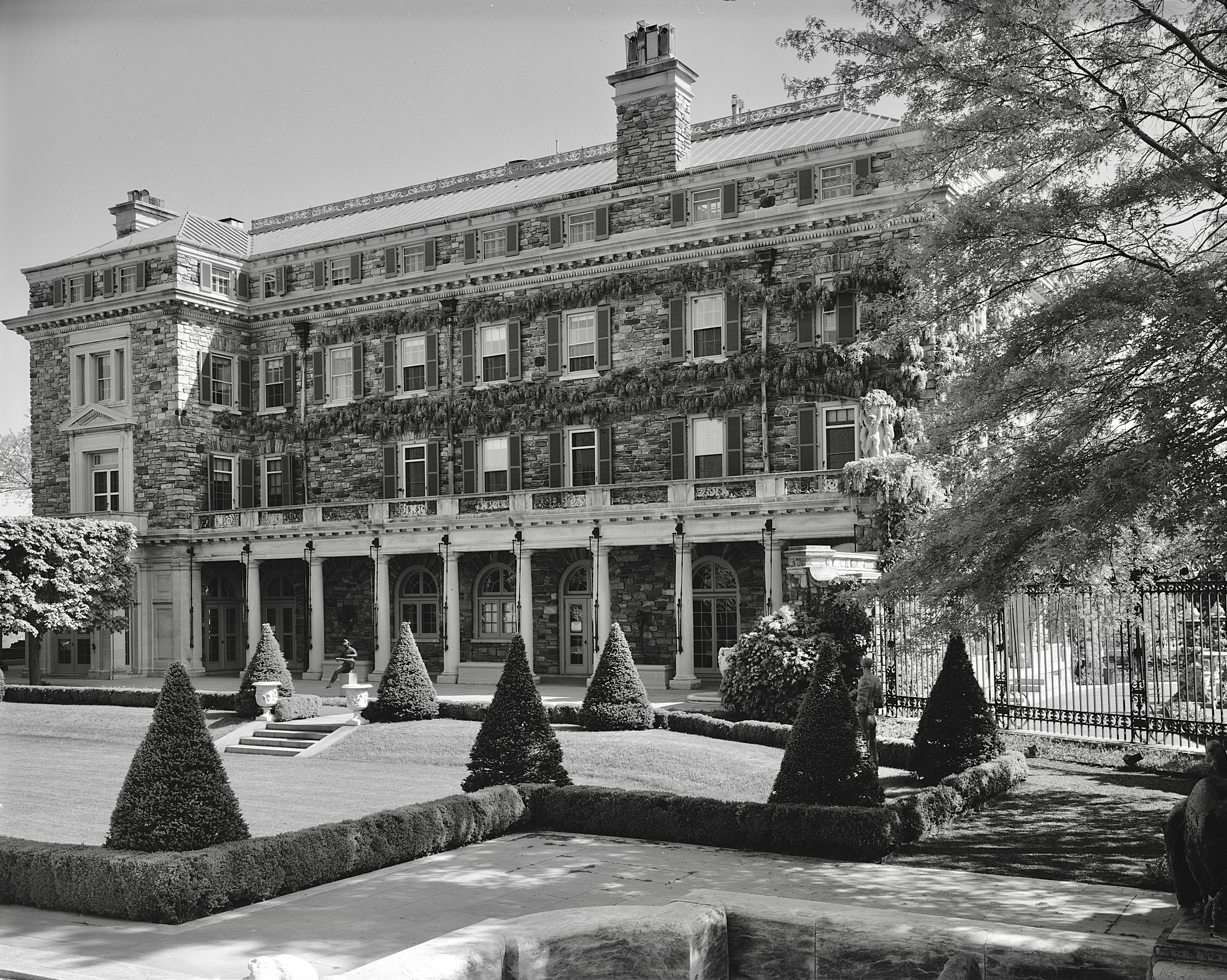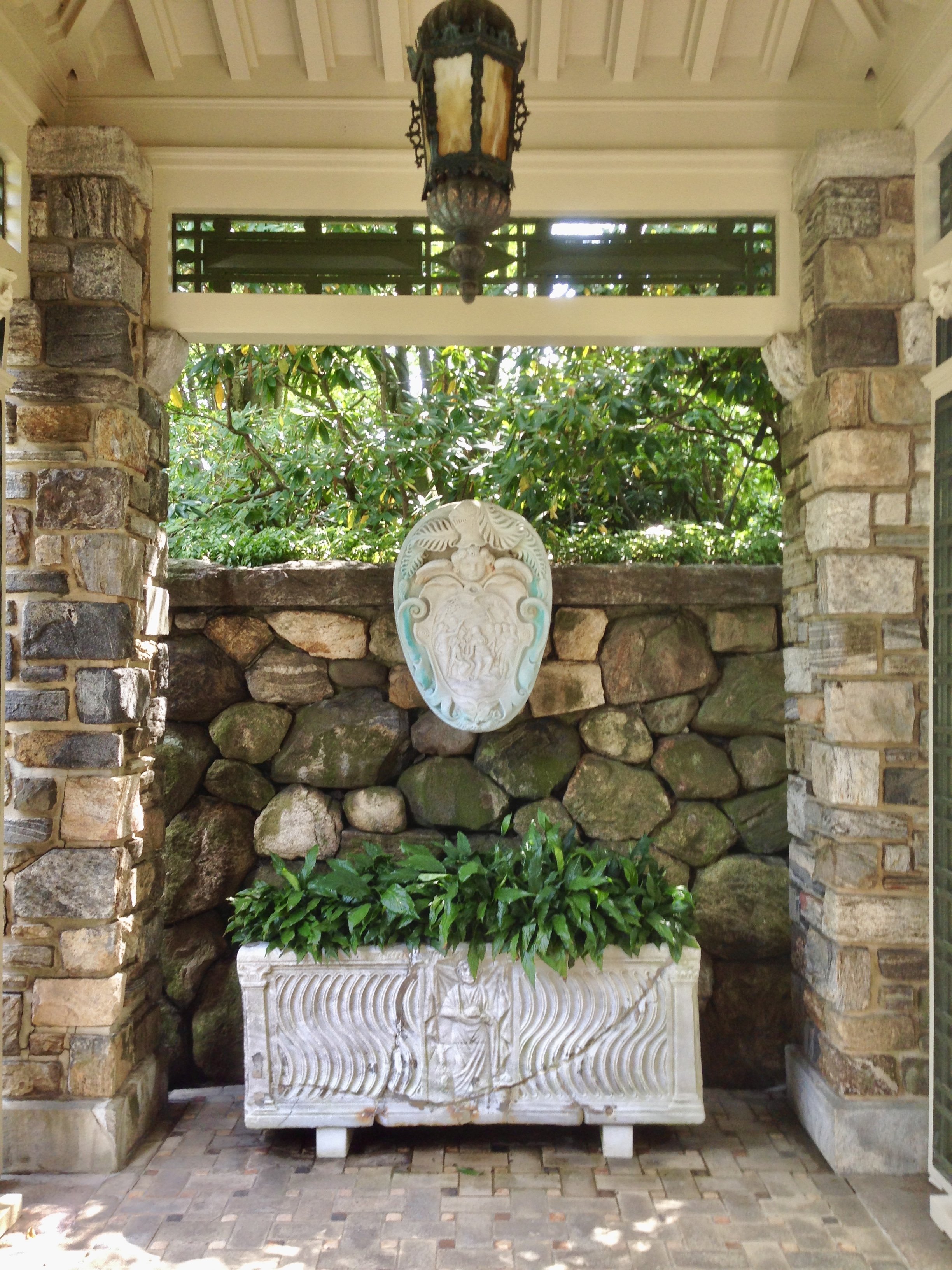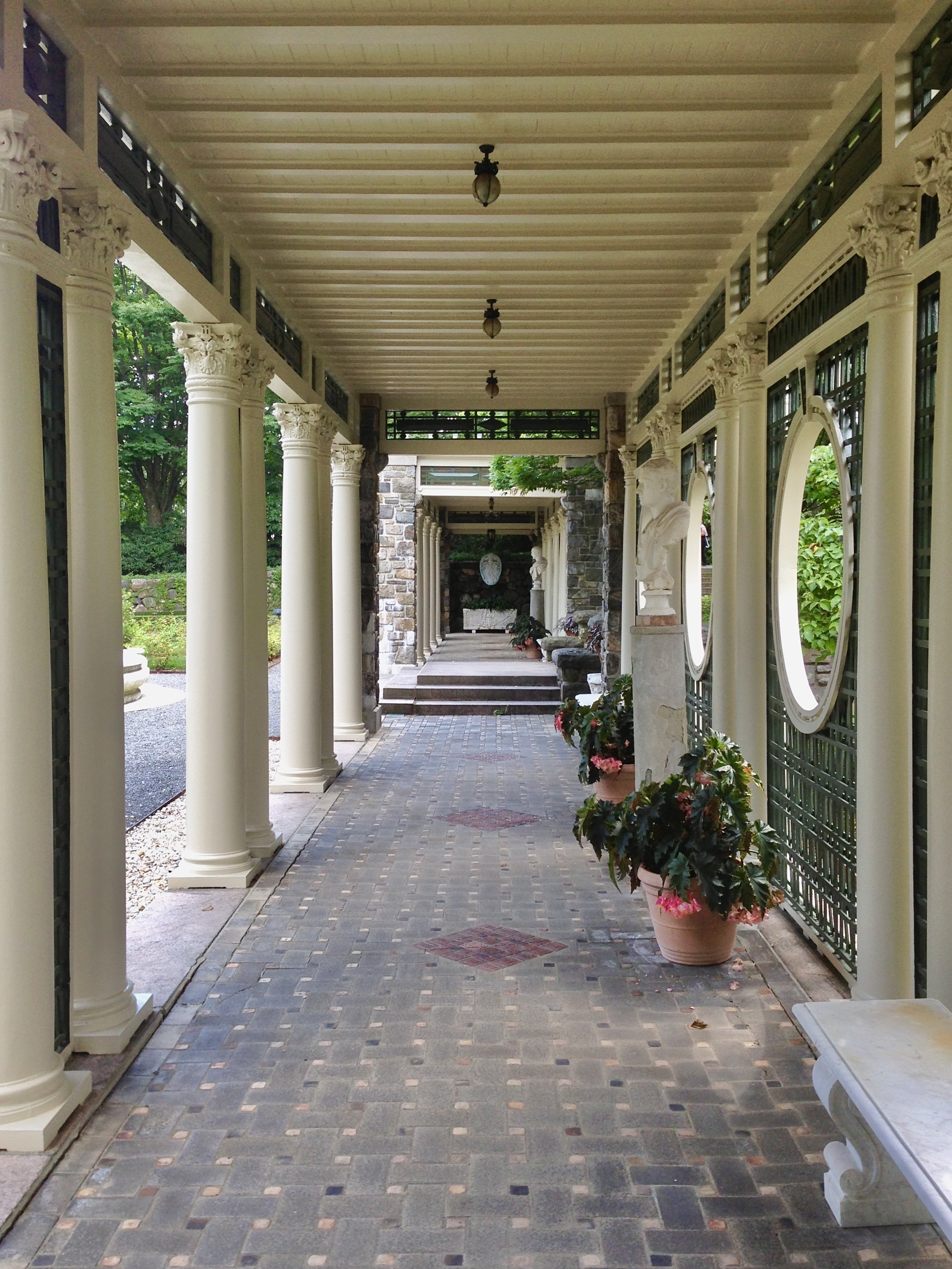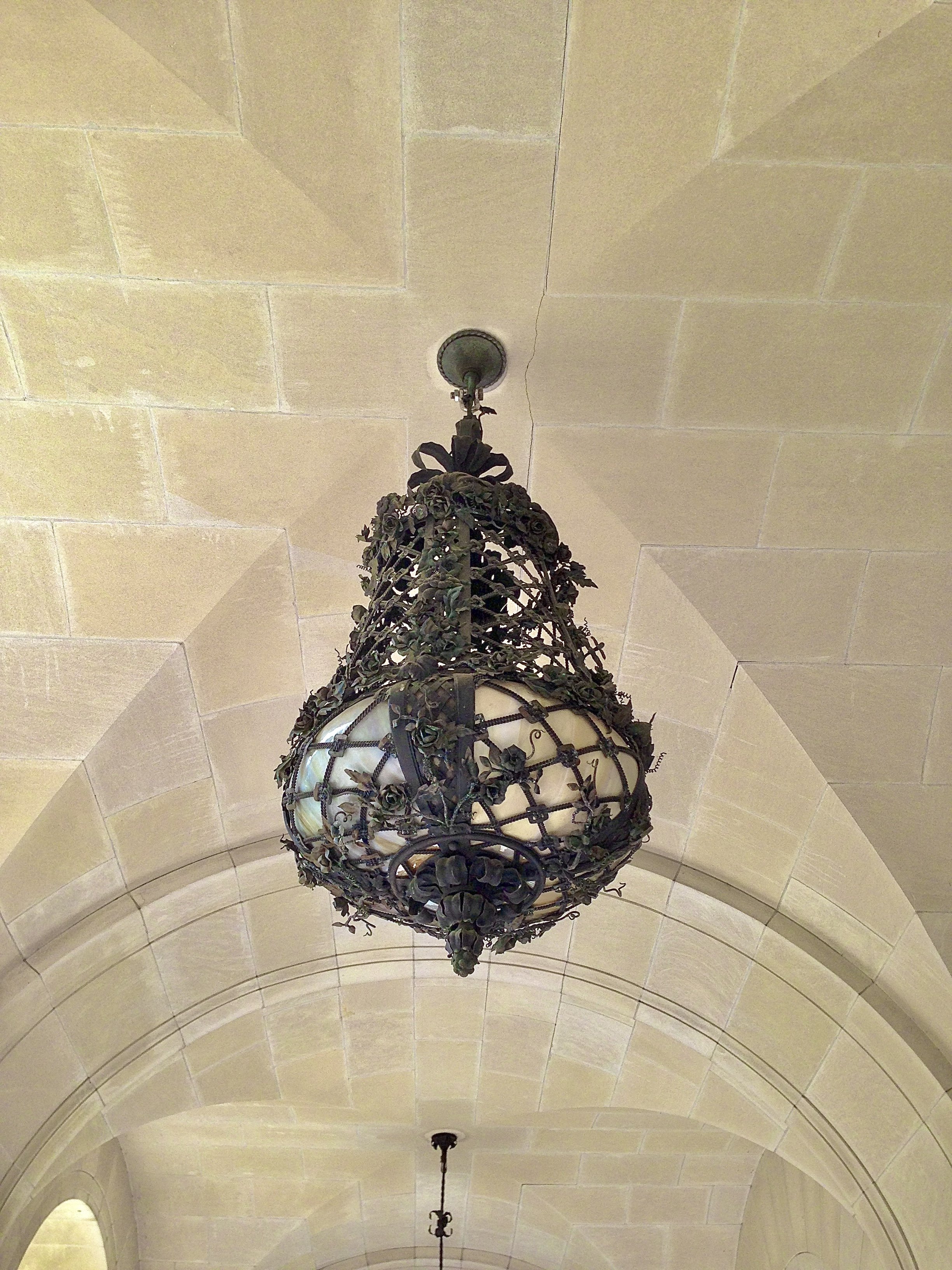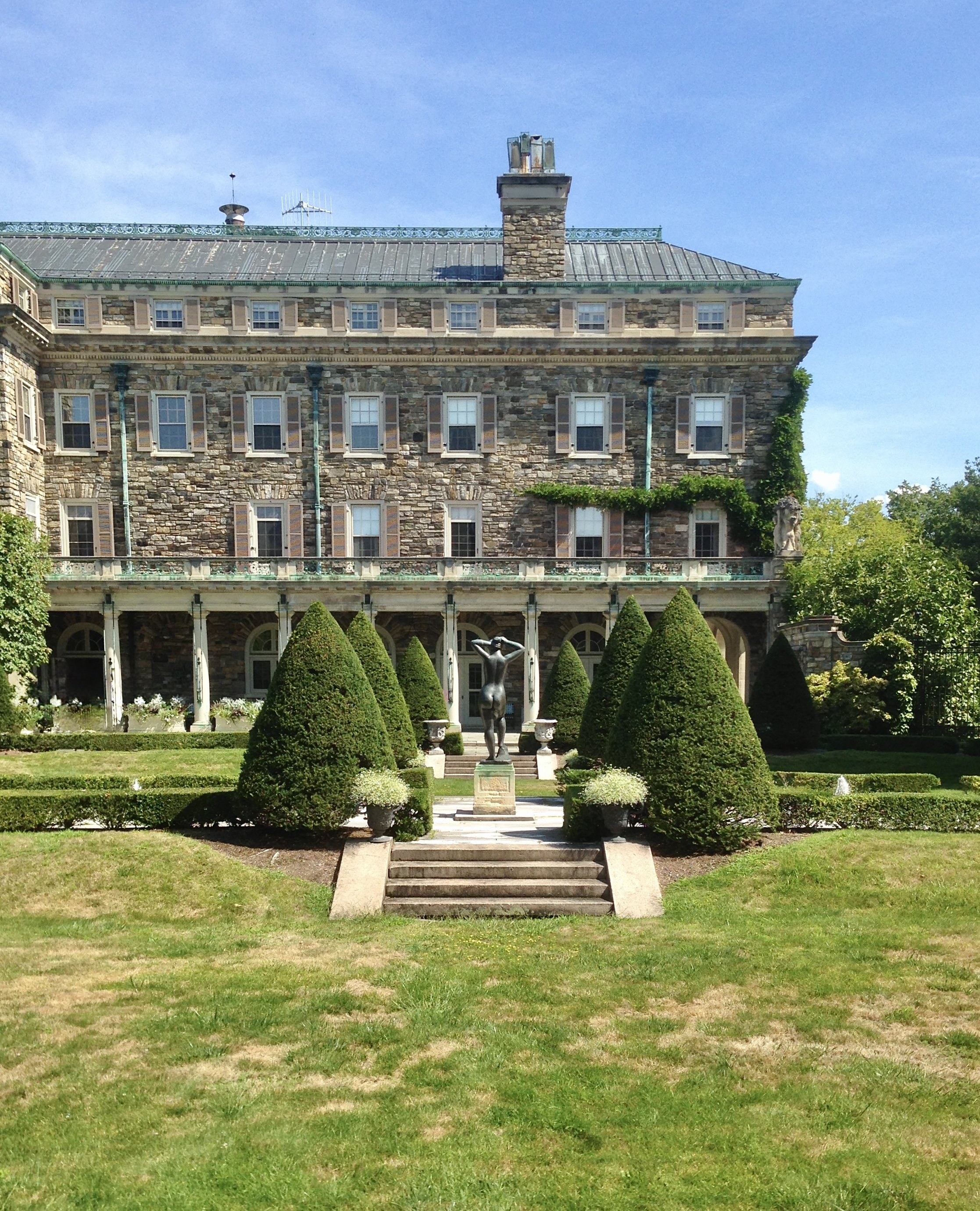Kykuit
Kykuit (derived from the Dutch word for look-out) is set high above the Hudson River in Pocantico Hills with dramatic views of the river and Palisades. Built for American businessman and philanthropist John D. Rockefeller, it has been home to four generations of the Rockefeller family. Although built as a home for Rockefeller Sr., Kykuit was largely conceived by his only son, John D. Rockefeller Jr., who inherited Kykuit after Sr.’s death in 1937. He owned it until his death in 1960 after which it was the home of his second son, Nelson A. Rockefeller, four-time governor of New York and vice president under President Gerald Ford.
The Estate History (abridged)
As early as 1893, John D. Rockefeller, founder of Standard Oil, purchased land in the area after his brother William Rockefeller had moved into a 204-room mansion, Rockwood Hall, in nearby Mount Pleasant. When Rockefeller and his son chose Pocantico Hills as their residence, he quietly purchased multiple homes and properties in the area, and used the houses for himself, his family, and staff.
Initially, Rockefeller and his wife Laura (née Spelman) Rockefeller moved into the Parsons-Wentworth House on the estate. Before it burned down in September 1902, they spent winter weekends and parts of each summer and fall there, sharing the upstairs rooms with their adult children and in-laws. Afterwards, Kent House, became the Rockefeller’s Pocantico residence until their new house was completed. Years later, Kent House was the home of his grandson, Laurance Rockefeller.
Rockefeller Sr. wanted the estate to serve as a comfortable domestic refuge for his family and saw the house as the focal point of the estate. He envisioned a T-shaped building, designed to take full advantage of the Hudson River and afternoon sunlight, with an office and drawing room at the entrance, a large central space, and a library, tea room, and dining room extending beyond the central living space. Rockefeller Jr. and his wife also wanted a family home, however, they saw the estate as a symbol of classical beauty. Kykuit was originally designed as a steep-roofed three-story stone mansion by William A. Delano and Chester H. Aldrich of Delano & Aldrich. Aldrich was a distant relative of Rockefeller Jr.’s wife, Abigail “Abby” (née Aldrich) Rockefeller.
Courtesy of the Library of Congress
Several years after construction began in 1905, but before it was occupied by the Rockefeller’s, John Sr. and his wife Laura were thoroughly disappointed with their new house. They disliked that the service entrance was directly below the primary bedroom window (which meant noisy service vehicles and deliveries interrupted their rest) and that the elevator and water closets were rather noisy. Additionally, the third floor bedrooms were too small under the steep roof to receive guests, and the improper functioning of the down drafts in the chimneys brought smoke into many of the rooms, causing damage to the walls and furniture.
To remedy the flaws, Rockefeller asked that the roof be raised to fix the faulty chimney drafts and suggested a service tunnel be built beneath the approach road so that deliveries could not be seen or heard by the family and their guests. He asked his landscape architect, William Welles Bosworth, to work with Delano and Aldrich to complete the home. Within three years, the new service entrance had been constructed, the roof was raised and flattened out, and a fourth floor was added for staff, allowing the entire third floor to be utilized for guests. The original porch was removed and Bosworth’s new façade of locally quarried rough-cut fieldstone and Indiana limestone was installed.
Courtesy of the Library of Congress
The resultant four-story Beaux-Arts villa was finally completed in 1913. Sr.’s wife Laura died at Kykuit in March 1915 while he was at their home in Florida.
Photograph of the completed home by Michael Brooks for the Historic American Buildings Survey, 1991-1993.
Courtesy of the Library of Congress
Inside Kykuit
Ogden Codman Jr.'s neo-classical interiors include English furnishings and collections of Chinese and European ceramics, family portraits, and portraits of George Washington, Benjamin Franklin and Abraham Lincoln.
In the early 1960s Nelson Rockefeller added an underground art gallery filled with 20th century art, including paintings, etchings, and lithographs by Toulouse-Lautrec, Pablo Picasso, Georges Braque, Marc Chagall, Andy Warhol, Henri Matisse, Fernand Leger, Wassily Kandinsky, Jackson Pollock, Robert Motherwell, and Mark Rothko. One corridor consists primarily of Picasso tapestries, commissioned by Nelson from 1955 to 1974 and created by Jacqueline de la Baume Durrbach with the approval of the artist himself. He also acquired works by artist Alexander Calder.
The Estate Grounds
The landscaping of the grounds was initially assigned to Warren Manning of the Olmsted Brothers, however, Rockefeller Sr. was unhappy with their work and assumed control of the design himself, transplanting whole mature trees, designing lookouts and several scenic winding roads.
In 1906, landscaping was taken over by William Welles Bosworth, who designed the surrounding hilltop terraces and formal gardens with grottos, fountains, pavilions and classical sculpture. The Beaux-Arts style gardens, which look out over the Hudson River, are considered some of Bosworth's best work in the United States.
The terraced gardens include a Morning Garden, Grand Staircase, Japanese Garden, Italian Garden, Japanese-style brook, Japanese Tea-house, large Oceanus Fountain, Temple of Aphrodite, loggia, and semicircular rose garden. The Oceanus Fountain commands the forecourt. Commissioned in 1913, it is a replica of Giambologna's fountain of 1576 for the Boboli Gardens of Florence. The original garden design incorporated sculptures and fountains after Renaissance models and sculpture by George Grey Barnard, Karl Bitter, Janet Scudder, among others.
In the 1960s and 1970s Nelson Rockefeller added more than 70 works of modern sculpture by European and American artists, including Henry Moore, Aristide Maillol, Louise Nevelson and Pablo Picasso. Their placement in the gardens evidenced his keen eye in choosing the perfect place for each.
Kykuit Today
Today, Kykuit, a National Historic Landmark, is owned by the National Trust for Historic Preservation, is maintained and administered by the Rockefeller Brothers Fund. Historic Hudson Valley offers public tours of the house and gardens from May through November.




